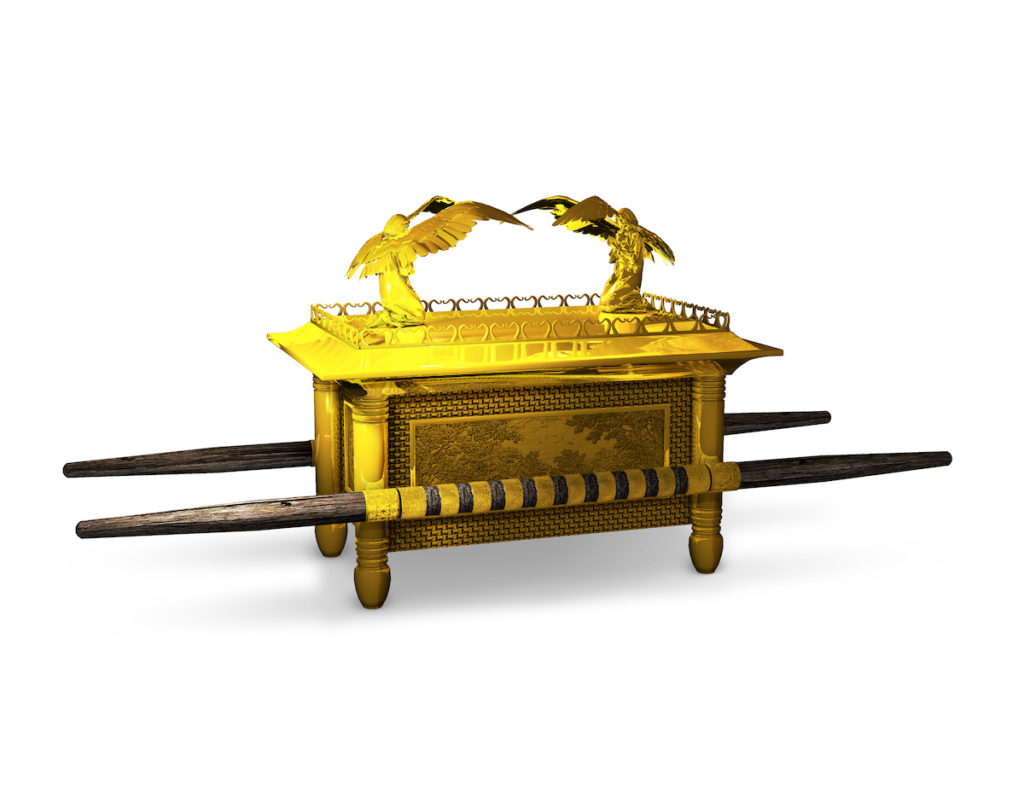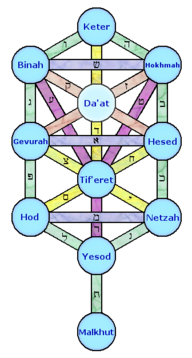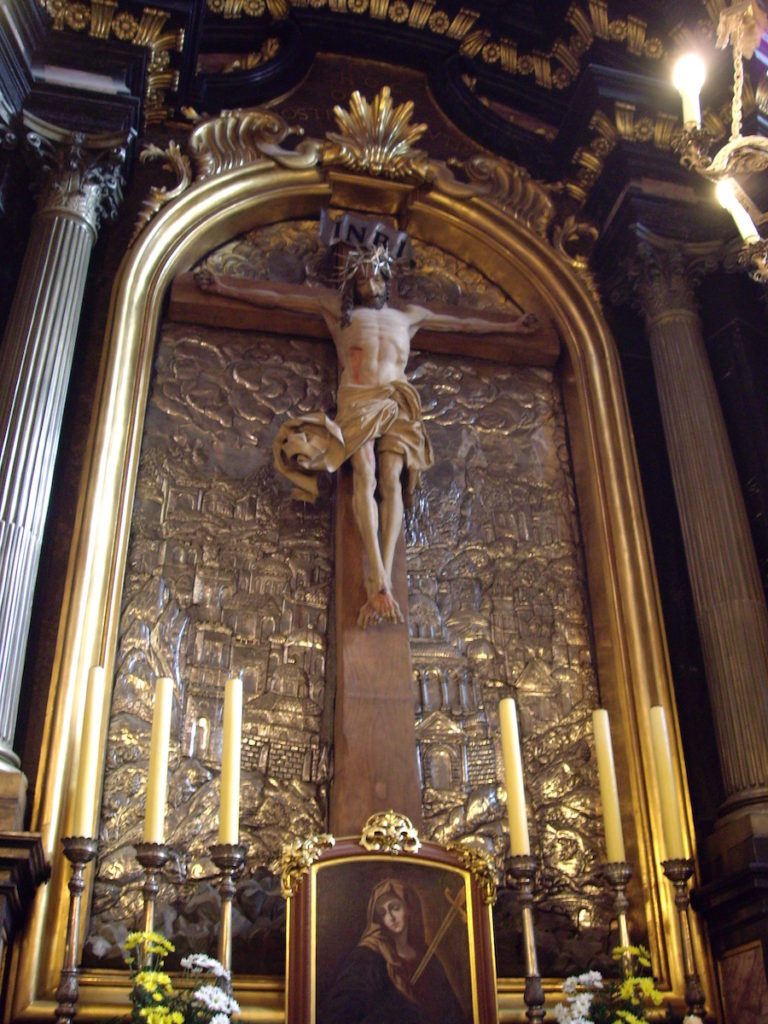Exodus 25

Exodus 25:10–22, Ark. The ark of the covenant was a small box of acacia wood overlaid in gold, which contained the golden pot of manna, Aaron’s rod that budded and the two tablets of stone containing the ten statements of Elohim—commonly called the Ten Commandments. Against the ark was leaned a scroll of the complete Torah (Deut 31:26).

Covering the ark was a golden cap called the mercy seat or kapporet and is related to the word kippur as in Yom Kippur, the Day of Atonement. Both share a common Hebrew root, which is the word kapar, which according to The Theological Wordbook of the Old Testament (TWOT) means “to make an atonement, make reconciliation, purge”) and the mercy seat—the golden “lid” covering the ark of the covenant located in the D’veer (i.e. the inner shrine of the Tabernacle of Moses)—which in Hebrew is the word kapporet was “the place of atonement or the place where atonement was made.” The TWOT defines what happened at the kapporet as follows:
“It was from the … mercy seat that [YHVH] promised to meet with the men [of Israel] (Num 7:89). The word, however, is not related to mercy and of course was not a seat. The word is derived from the root ‘to atone.’ The Greek equivalent in the LXX is usually hilasterion, “place or object of propitiation,” a word which is applied to [Messiah] in Rom 3:25. The translation ‘mercy seat’ does not sufficiently express the fact that the lid of the ark was the place where the blood was sprinkled on the day of atonement. ‘Place of atonement’ would perhaps be more expressive.”
The mercy seat covering the ark that contained the Torah is a vivid symbolic picture of YHVH’s mercy triumphing over his judgment (Jas 2:13). We all deserve death for violating his commandments, for the wages of sin is death (Rom 6:23) and sin is the violation of YHVH’s Torah commands (1 John 3:4). However. Yet when we repent of our sins and place our faith in Yeshua’s atoning death on the cross as payment for those sins, YHVH forgives us and grants us his merciful grace.
Everything in, on and around the ark pointed to Yeshua. Inside the ark was the golden pot of manna, which points to Yeshua who the bread of life—the Word of Elohim made flesh. Aaron’s rod that budded speaks of Yeshua’s role as the ultimate high priest due to his atoning and life-giving work at the cross. The two stone tablets and the Torah scroll speak of the Yeshua who was the Word of Elohim from the foundation of the world (John 1:1,14), and whose words or instructions in righteousness the saints are instructed to follow (John 14:15; 1 John 2:3–6; Rev 12:17; 14:12).
Overshadowing the mercy seat were two golden cherubim with outstretched wings. This is a picture of YHVH’s throne in heaven, which is surrounded by cherubim and other living creatures that sing his praises and minister to him (Rev 4).
The Ark of the Covenant in More Detail
The ark of the covenant is the gold-covered acacia wood box with the pure gold crown or mercy seat upon which are the two gold cherubim that represented the very throne and glorious Presence of YHVH himself. Inside the box were the tables of the Torah, Aaron’s rod that budded (Num 16) and the golden pot of manna (Exod 16:32–34). Against the ark was leaned a scroll of the complete Torah (Deut 31:26).
Once a year, on the Day of Atonement, the high priest entered this part of the tabernacle to make atonement for his sins and those of the nation of Israel (Exod 16:14–19). The most set-apart place was also called the oracle (D’veer), for it was here that YHVH often met with and talked to Moses giving him instructions on how to govern the Israelites (Exod 25:21–22).
The gold-covered wooden box pictures resurrected and glorified humanity raised to that place by the work of Yeshua and the mercy of YHVH. Two realities identify the bride of Yeshua: Spirit and truth (John 4:23); namely, the truth of Torah of the Written Torah (the box contained the two stone tablets) and that of the Living Torah who is the Manna or Bread of Life. In addition, Aaron’s rod that budded (also in the box) pictures the authority and fruitfulness of the priesthood of believers (2 Pet 2:5-9) through the work of Yeshua on the cross (see also Rev 11:17; 12:14). Additionally, the Torah scroll leaning up against the ark illustrates to us that without total dependence on Yeshua (his work at the cross and partaking of the spiritual manna of Yeshua’s broken body we cannot properly keep the Torah. Only with Yeshua living in the heart of a regenerated believer by the power of his Spirit can one keep the Torah. Without the Torah leaning on Yeshua, the Torah becomes the dead letter of the law (2 Cor 3:6)!
As the high priest sprinkled the mercy seat with blood seven times on Yom Kippur so Yeshua bled seven times: at Gethsemane, from the scourging, the crown of thorns, nail in the left hand, nail in the right hand, nail in the feet and the spear in his side.
Exodus 25:21, The testimony. This is the Torah in codified form or what became known as the law of Moses. Prior to this, the Torah was YHVH’s oral instructions to men passed on down generationally from teacher to student, from father to son. Moses, under instructions from Elohim, wrote this oral Torah down as it was transcribed to him on Mount Sinai (Exod 24:12) and to which additions were made on an as-need basis as YHVH subsequently spoke to Moses from his earthly throne of the tabernacle (Exod 25:22).
Continue reading










